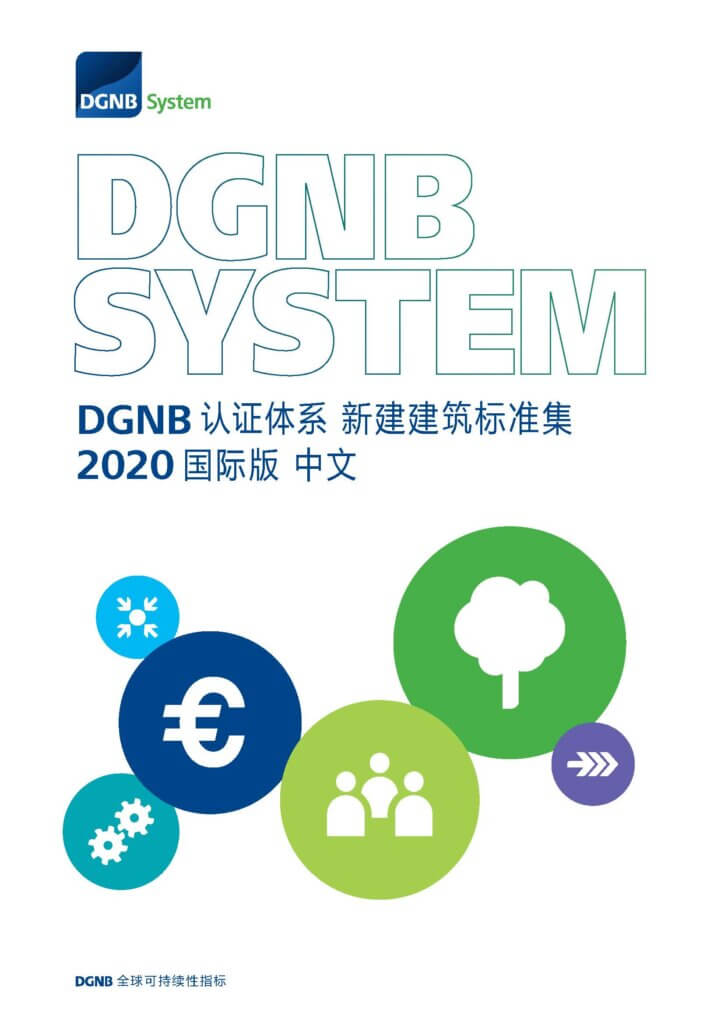DGNB System Version 2020 International

This document is a Chinese translation of the DGNB System Version 2020 International. DGNB International System Version 2020 is an “umbrella document” for all new building schemes available under the DGNB Certification System. It currently covers nine new building schemes.
DGNB认证体系新建建筑标准集: 2020国际版

Financing instruments for green buildings

Limiting global warming to a maximum of 2 °C is essential if we are to preserve an environment worth living in and maintain prosperity and a functioning economic system. The investments needed to ensure that buildings are climate-neutral and energy-efficient far exceed public funding resources. Redirecting current financial flows is the only way to bring […]
Feasibility of positive energy districts in China: research report by the China Academy of Building Research

China is aiming to achieve climate neutrality by 2060. President Xi Jinping announced this ambitious target at the United Nations General Assembly in September 2020. One of the areas that the country is focusing on as a means of achieving this target is the sustainable transformation of the building sector, in particular promoting energy efficiency […]
The urban energy transition in China and Germany: selected best practices

As a stakeholder in the Sino-German Urbanisation Partnership (SGUP) project, the Deutsche Energie-Agentur (German Energy Agency – dena) is substantially involved in the cooperation between Germany and China on climate-friendly urban development. In Germany, dena’s Urban Energy Transition project has compiled findings from practice and drawn up recommendations for policy-makers to enable the energy transition’s […]
Building-integrated photovoltaics (BIPV) in China and Germany

Solar energy is becoming increasingly important as a clean, abundant and affordable renewable energy source for achieving globally necessary energy savings, advancing the energy transition and increasing the use of renewable energies. It is particularly relevant for achieving the new climate targets announced in September 2020 by China, which is aiming to peak CO2 emissions […]
Plus Energy Buildings & Districts

Germany’s building sector accounts for about a third of the country’s total greenhouse-gas (GHG) emissions and 40 % of total energy consumption. The continuous enhancement of building standards is a key element to reduce CO2 emissions of buildings especially during the operational phase. In recent years, several models to maximise thermal performance of buildings have been developed. Well-known examples are the Passive House, the nearly Zero Energy Building (nZEB), and the Plus Energy Building as the next ambitious step in the evolvement of highly energy efficient construction.
Energy Efficiency of Buildings & Energy Districts in Urban Renewal

This document is part of ten Keystone Papers looking at current emerging topics in the building and city sector, focusing on energy efficiency and resilience. The Keystone Papers were developed within the framework of the Sino-German Urbanisation Partnership as a basis for its working topics.

